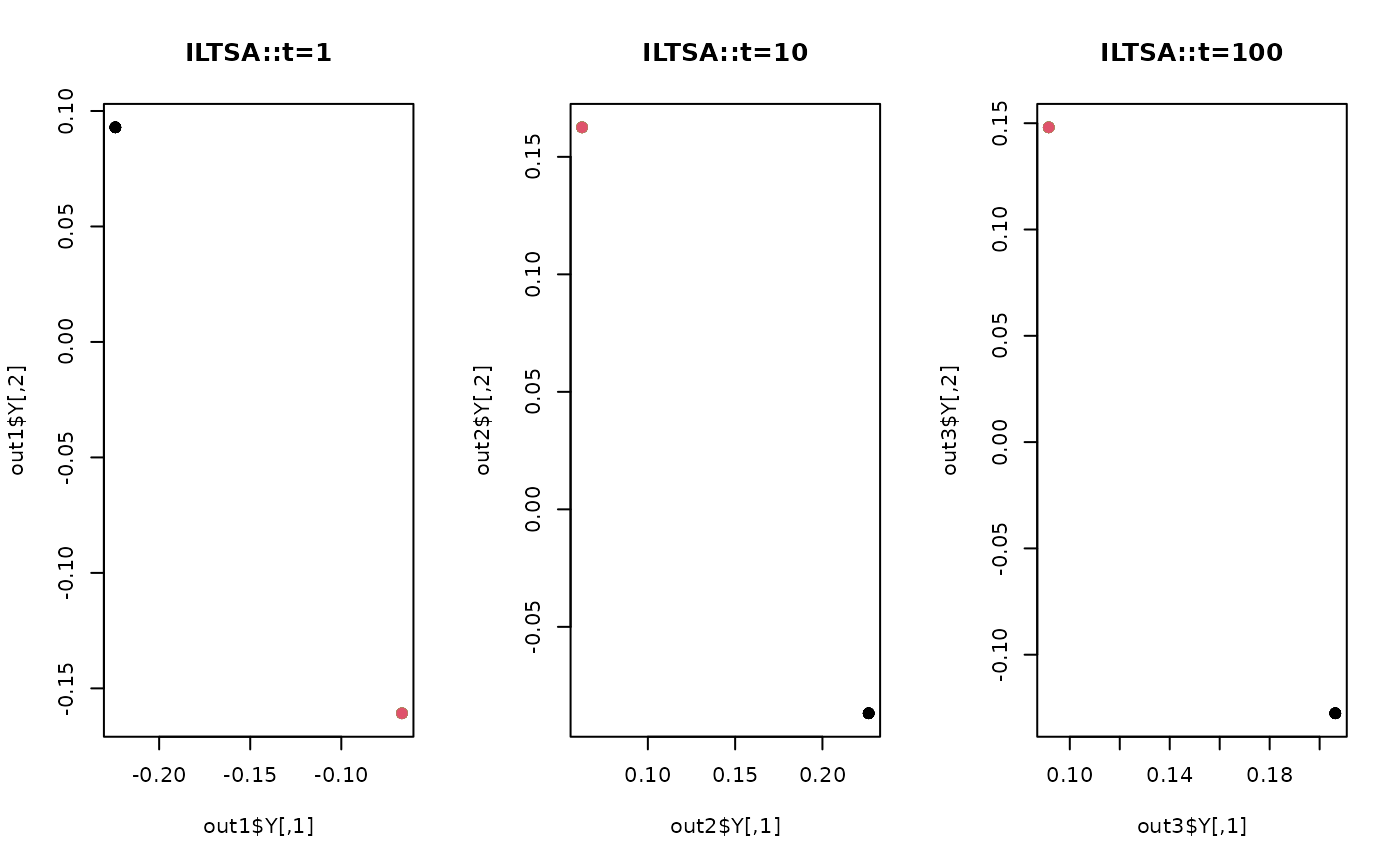Conventional LTSA method relies on PCA for approximating local tangent spaces. Improved LTSA (ILTSA) provides a remedy that can efficiently recover the geometric structure of data manifolds even when data are sparse or non-uniformly distributed.
Arguments
- X
an \((n\times p)\) matrix or data frame whose rows are observations and columns represent independent variables.
- ndim
an integer-valued target dimension.
- type
a vector of neighborhood graph construction. Following types are supported;
c("knn",k),c("enn",radius), andc("proportion",ratio). Default isc("proportion",0.1), connecting about 1/10 of nearest data points among all data points. See alsoaux.graphnbdfor more details.- symmetric
one of
"intersect","union"or"asymmetric"is supported. Default is"union". See alsoaux.graphnbdfor more details.- preprocess
an additional option for preprocessing the data. Default is "center". See also
aux.preprocessfor more details.- t
heat kernel bandwidth parameter in \((0,\infty)\).
Value
a named list containing
- Y
an \((n\times ndim)\) matrix whose rows are embedded observations.
- trfinfo
a list containing information for out-of-sample prediction.
References
Zhang P, Qiao H, Zhang B (2011). “An Improved Local Tangent Space Alignment Method for Manifold Learning.” Pattern Recognition Letters, 32(2), 181--189.
Examples
# \donttest{
## load iris data
data(iris)
set.seed(100)
subid = sample(1:150,50)
X = as.matrix(iris[subid,1:4])
label = as.factor(iris[subid,5])
## try different bandwidth size
out1 <- do.iltsa(X, t=1)
out2 <- do.iltsa(X, t=10)
out3 <- do.iltsa(X, t=100)
## Visualize two comparisons
opar <- par(no.readonly=TRUE)
par(mfrow=c(1,3))
plot(out1$Y, pch=19, col=label, main="ILTSA::t=1")
plot(out2$Y, pch=19, col=label, main="ILTSA::t=10")
plot(out3$Y, pch=19, col=label, main="ILTSA::t=100")
 par(opar)
# }
par(opar)
# }